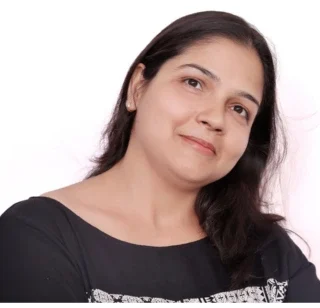
Expert Tips from Dr. Ruupa Rao on Managing Separation Anxiety Disorder in Kids
Five Symptoms of Separation Anxiety Disorder in Children and How to Help Them Cope and Heal, According to Dr. Ruupa Rao
10 years old ram used to be the epitome of joy, eagerly going to school and playing with his friends. But after his family moved to a new city, everything changed. Ram began refusing to go to school, clinging desperately to his mother, and frequently complaining of stomachaches. His once-happy mornings turned into tearful struggles as he begged his mother not to leave him. He says something dangerous thing may happen to his mother.
Dr. Ruupa Rao, a well-known psychologist based in Bangalore, explains that Ram’s behavior is indicative of Separation Anxiety Disorder (SAD), a condition where children experience intense fear and anxiety when separated from their parents or primary caregivers. “This isn’t just a phase that children grow out of,” Dr. Rao stresses. “If left untreated, SAD can have serious implications on a child’s emotional and social development.” 

Understanding Separation Anxiety Disorder (SAD)
Dr. Ruupa Rao notes that while it’s normal for young children to feel anxious when saying goodbye to their parents, SAD goes beyond the usual distress. It is a more severe and persistent form of anxiety that can interfere with a child’s ability to function normally.
Why Does Separation Anxiety Happen?
According to Dr. Ruupa Rao, Separation Anxiety Disorder can be triggered by various factors, such as major life changes like moving to a new city, or starting a new school, or changes in family dynamics, such as divorce or the birth of a sibling. Dr. Rao thinks that some children may have a genetic predisposition to anxiety, while others might develop SAD due to their temperament. “Parental anxiety can also contribute to a child’s separation anxiety,” Dr. Rao explains. “Children are very perceptive and often mirror the emotions of their parents.”
Recognizing the Symptoms
Dr. Ruupa Rao identifies five key symptoms that may suggest a child is suffering from Separation Anxiety Disorder:
Excessive Worry About Harm Befalling Parents:
“Children with SAD often have an overwhelming fear that something bad will happen to their parents while they’re apart,” Dr. Rao says. This fear can dominate a child’s thoughts, making it difficult for them to focus on anything else.
Refusal to Attend School or Activities:
Dr. Rao points out that children with SAD might refuse to go to school or participate in activities that require separation from their parents. “This can significantly impact their academic performance and social development,” she adds.
Physical Symptoms During Separation:
“Physical symptoms like headaches, stomachaches, or dizziness can be a manifestation of a child’s anxiety,” Dr. Rao notes. These symptoms often appear when a child anticipates or experiences separation.
Excessive Clinginess and Need for Reassurance:
“Children with SAD may exhibit clinginess, following their parents around or continuously seeking reassurance,” Dr. Rao says. This behavior can disrupt daily activities and be exhausting for parents.
Nightmares About Separation:
“Nightmares related to separation are another common symptom,” Dr. Rao explains. “These can make bedtime stressful and lead to further anxiety during the day.” 

How to Help Your Child Cope and Heal
Dr. Ruupa Rao offers several strategies for parents to help their children cope with and overcome Separation Anxiety Disorder:
Reassurance and Routine:
Dr. Rao highlights the importance of providing consistent reassurance and establishing a predictable routine. “Children need to know that their parents will return and that their daily schedule is stable,” she says, referring to advice from the book “The Anxiety Cure for Kids.”
Gradual Exposure to Separation:
Gradual exposure to separation is a technique Dr. Rao recommends, as described in the book “Separation Anxiety in Children and Adolescents.” “Start by leaving your child with a trusted caregiver for short periods, gradually increasing the time as they become more comfortable,” she advises.
Teach Relaxation Techniques:
“Relaxation techniques such as deep breathing and mindfulness can be very effective in helping children manage their anxiety,” Dr. Rao suggests. She references “Mindfulness for Teen Anxiety” by Christopher Willard as a resource for practical exercises that can be adapted for younger children.
Encourage Independence:
“Encouraging independence is crucial,” Dr. Rao asserts, drawing from Tamar Chansky’s book “Freeing Your Child from Anxiety.”Simple tasks like playing alone or staying with a relative can help build a child’s confidence.
Professional Help: Dr. Ruupa Rao stresses that in some cases, professional intervention is necessary. “Therapy, particularly Cognitive Behavioral Therapy (CBT), can be very effective. In more severe cases, a combination of therapy and medication might be needed,” she explains.
The Consequences of Untreated Separation Anxiety
Dr. Ruupa Rao warns that if Separation Anxiety Disorder is not addressed, it can lead to long-term challenges. “Children who don’t receive the help they need may struggle with anxiety and depression later in life,” she cautions. “They might also have difficulties forming healthy relationships or succeeding academically.”
Dr. Rao emphasizes that early intervention is key. “The sooner a child receives support, the better their chances of overcoming SAD and developing the skills they need to manage anxiety throughout their lives,” she concludes.
Final Thoughts: Separation Anxiety Disorder can be overwhelming for both children and their parents, but Dr. Ruupa Rao reassures that with the right strategies and support, it is possible to help children overcome their anxiety. “If you recognize the symptoms of SAD in your child, don’t hesitate to seek help,” she advises. “Your proactive approach can make all the difference in your child’s emotional well-being and future success.”




